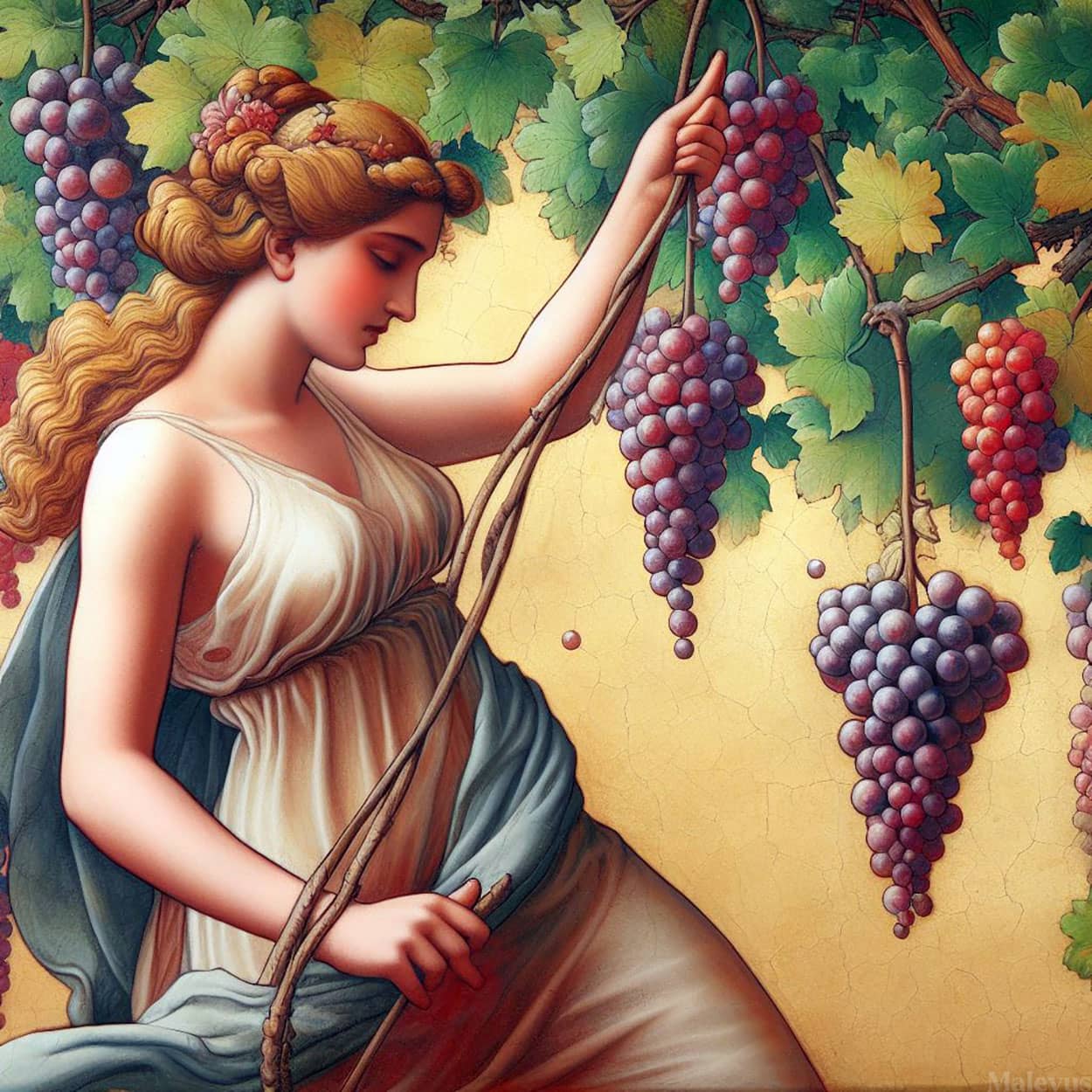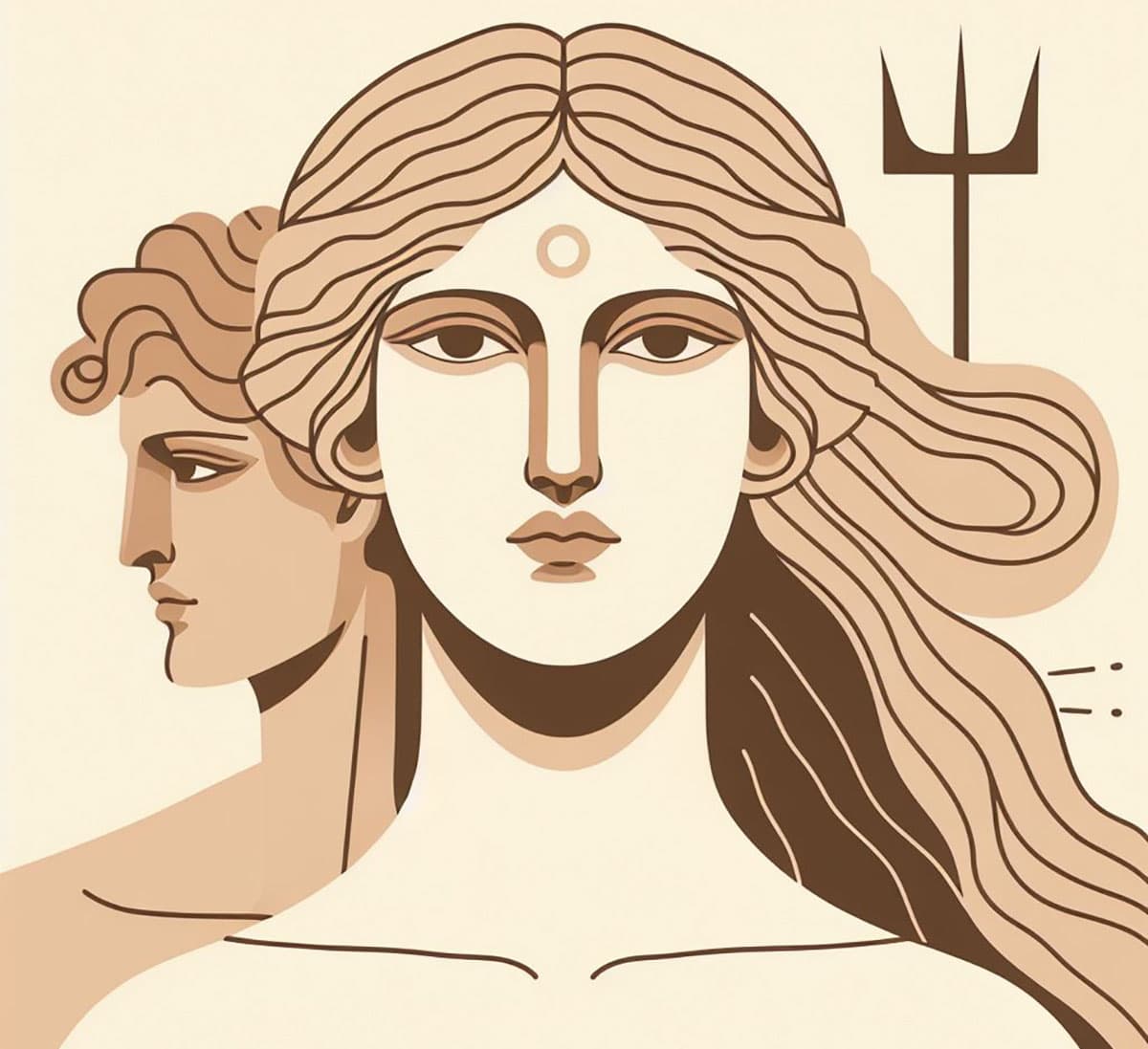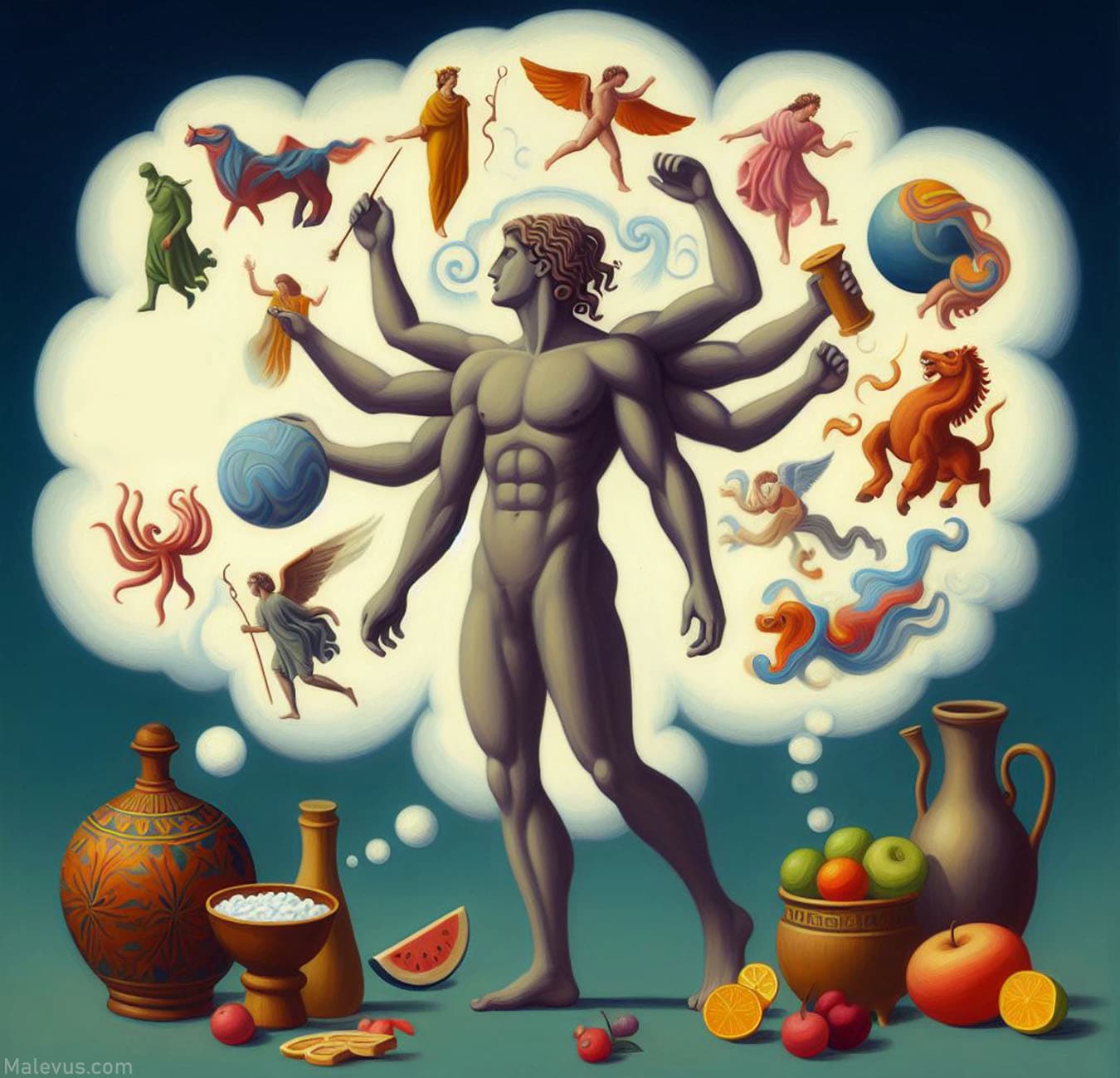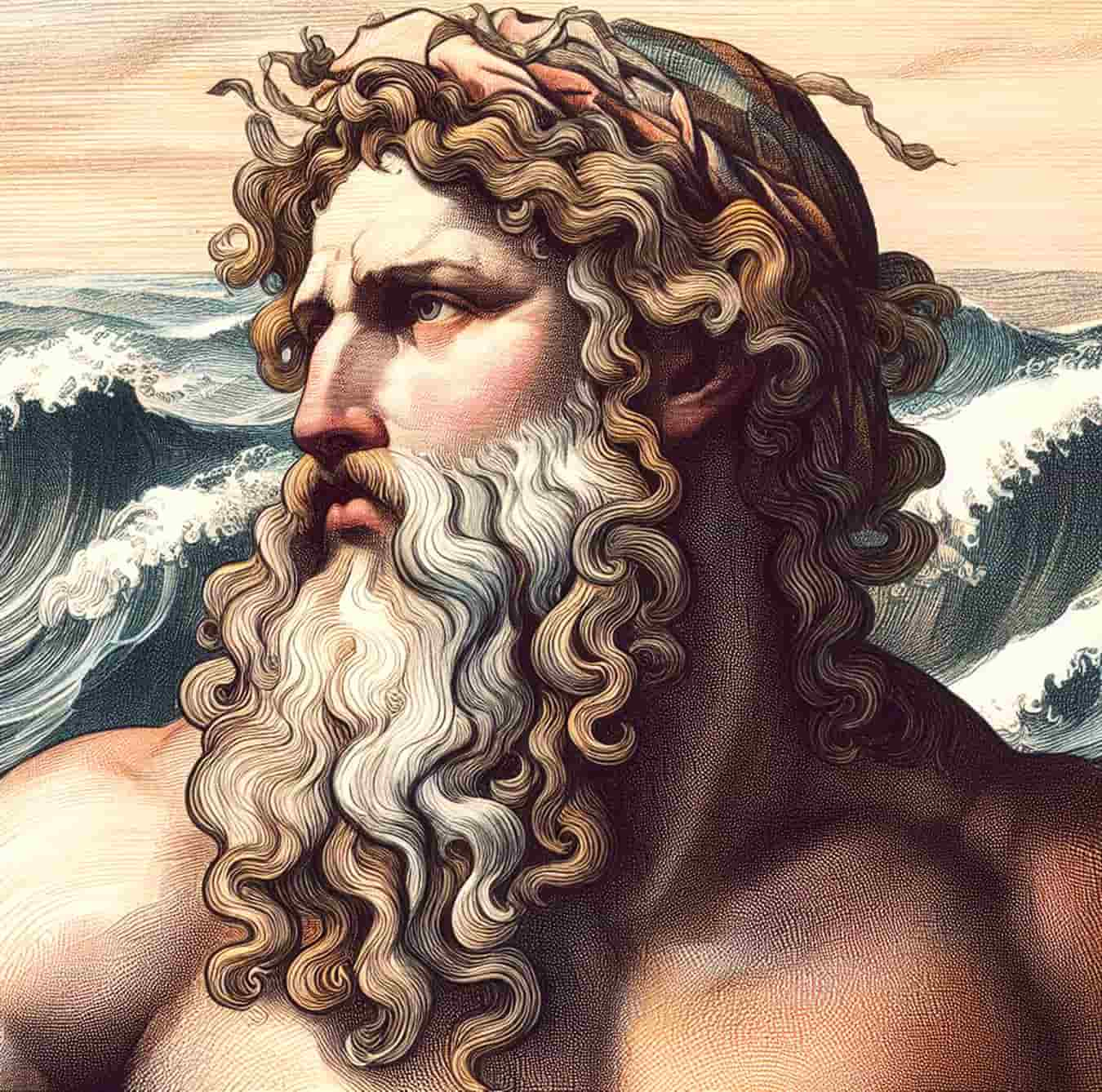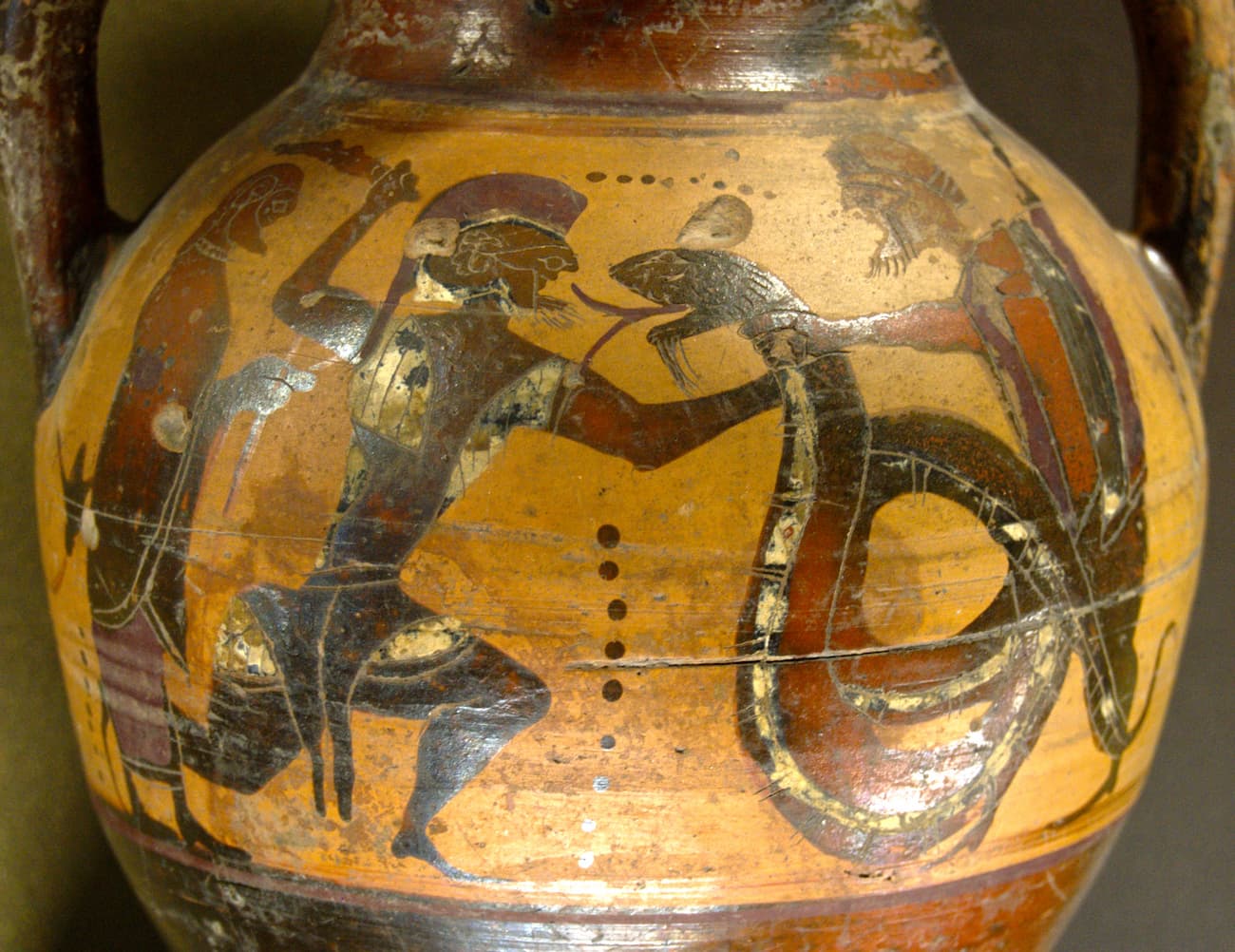In Greek mythology, Erigone (in Ancient Greek Ἠριγόνη) is the daughter of the Athenian Icarius, who introduced the worship of Dionysus (Bacchus) into his lands. She was loved by the god, who, to seduce her, transformed into false grapes. In this way, the god taught her the art of vine cultivation. Upon learning of her father’s death, murdered by drunken shepherds, she hung herself in despair. To reward her filial piety, Zeus placed her in the constellation of Virgo.
Erigone in the Myths
Beloved by Dionysus
Erigone was the daughter of the Athenian Icarius who was an Attic farmer. He entertained the god Dionysus to whom Dionysus had taught the art of vine cultivation as a thank you and whose region he had introduced his worship. She was loved by the god, who, to seduce her, transformed into a bunch of grapes. The god also taught her the art of vine cultivation.
Ovid mentions the myth of Erigone in the sixth book of his Metamorphoses:
Dionysus ensnared Erigone with delusive grapes.
Metamorphoses Book VI (A. S. Kline’s Version)
Death of Erigone
One day, worried about her father’s absence, she set out with her faithful dog Maera to find him. Maera led Erigone to her father’s body, massacred by drunken shepherds (according to Pseudo-Plutarch by stoning, according to Hyginus by beating) who believed he had poisoned them with this new intoxicating drink. They buried him under a tree.
Both were so desperate that Erigone hung herself above the tomb, and Maera, to atone for his guilt, threw himself into a well named “Anigro” (or jumped from a cliff). Dionysus, furious, cast a curse on the land, causing all the young girls of Athens, driven mad, to hang themselves in turn. The god’s anger only subsided when a cult to Icarius and Erigone was established.
The Constellation of Virgo
According to different versions, the gods placed Icarios, Erigone, and Maira among the stars. Either Zeus, to reward her filial piety, or Dionysus placed Erigone in the sky in the form of the constellation Virgo. The god also turned Icarius into the constellation Boötes and Maera into the star Procyon, which he placed in the constellation Canis Minor (or Major).
Cult of Erigone
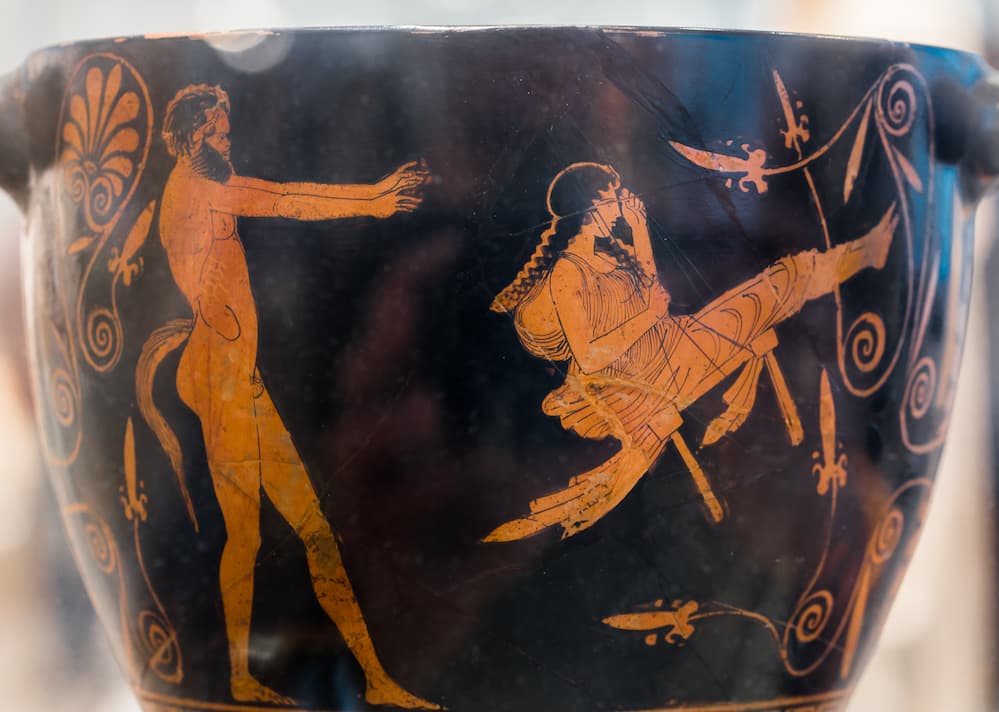
As punishment for this, Dionysus caused the daughters of the Athenians to behave in the same way. It is said that Erigone herself prayed for the same fate for them as for herself before she killed herself. Thus, after Erigone hanged herself, an epidemic of madness broke out in Athens, which led to young Athenian women hanging themselves.
The Athenians consulted the oracle of Delphi and when they inquired of Apollo about the cause of the suicides, they received an answer of their disregard for the fate of Icarius and Erigone. They were advised to honor Icarius, Erigone and Maera through annual sacrifices. Therefore, the Greek swing festival (Aiora) was established in the city. This festival was later known in Rome as oscilla.
Thus began the annual celebration of hanging dolls from trees and offering drinking offerings in memory of the two. During this festival, small images were hung on trees, and small fruit sacrifices were made. The story of Erigone may have aimed to explain the origin of this cult practice.
Every year in Athens, the Anthesteria festival took place, during which Ikarius and Erigone were celebrated as heroes. On the second day of the festival, known as Choes (Χόες, “swinging day”), girls swung on swings adorned with flowers. Swinging was done in honor of Aletes (“day”) or Aiora (ancient Greek: Ἐώρα “swing,” Αἰώρα “breeze”).
References
The fate of the Erigone is described in a poem by the Greek polymath Eratosthenes of Cyrene from the 3rd century BC, which has survived only in a few fragments. Although the legend is older, all known versions ultimately go back to the version poetically designed by Eratosthenes which he named “Erigone.”
Former Deputy of the Kingdom of Italy, politician, and poet Gabriele d’Annunzio used the material in his stage play Le Martyre de saint Sébastien, a musical mystery play that premiered in 1911. “163 Erigone” (discovered in 1876) is the name of an asteroid. Erigone is also the name of a species of spider.


